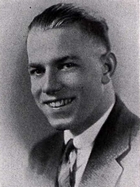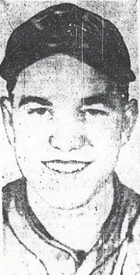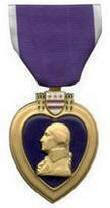Art Sinclair
| Date and Place of Birth: | 1918 Haddonfield, NJ |
| Date and Place of Death: | January 26, 1944 off coast of Anzio, Italy |
| Baseball Experience: | Minor League |
| Position: | Pitcher |
| Rank: | Technician Fifth Grade |
| Military Unit: | Company C, 83rd Chemical (Motorized) Battalion US Army |
| Area Served: | Mediterranean Theater of Operations |
Arthur H. "Art" Sinclair was born in Haddonfield, New Jersey. His parents,
Arthur and Katherine, had come to the United States from Ireland and ran
a grocery business in East Camden. Sinclair was a star athlete at
Haddonfield Memorial High School, playing varsity baseball and football.
By 1934, he was pitching for the New
York Shipbuilding Corporation in the South Jersey League. He was signed
by the New York Giants' organization in late 1937, and went to spring
training at Lafayette, Louisiana, with the Jersey City Giants of the
Class AA International League. The left-hander was assigned to the Fort
Smith Giants of the Class C Western Association for the regular season
and made 21 appearances for an 8-4 record with a 3.46 ERA.
That was to be his only fling in professional baseball. Sinclair
returned to New Jersey at the end of the season and played semi-pro as a
pitcher/outfielder with Haddonfield of the Camden County League. When he
entered military service on July 9, 1942, he was leading the league with
a .491 batting average. Following basic training, Sinclair joined
Company C, 83rd Chemical (Motorized) Battalion at Camp Gordon, Augusta,
Georgia, where he learned to operate chemical mortars firing phosphorous
and smoke rounds. After training, the battalion departed for overseas
duty on April 29, 1943. On May 11, they arrived at Oran in North Africa,
and began intensive amphibious training in preparation for immediate
combat.
The battalion landed at Sicily on July 10, 1943, and then made another
amphibious landing at Maiori, near Salerno in Italy, where they
frequently engaged enemy patrols in fire fights. The advance northward
in Italy slowed to a halt as the Allied Forces encountered the
formidable Gustav Line and, in an effort to break the stalemate, the
invasion of Anzio was planned.
On the night of January 25, 1944, LST-422 (landing ship tank) -
operated by the Royal Navy - departed Naples, Italy, loaded with trucks,
Jeeps, M3 halftracks, ambulances, and other vehicles. She also carried
50-gallon barrels of gasoline and a variety of ammunition. The personnel
aboard were Companies C, D and Headquarters of the 83rd Chemical
Battalion, Motorized, including T/5 Sinclair. LST-422 was part of a
convoy of 13 LSTs and arrived off the beaches of Anzio, Italy, during
Operation Shingle at about 1:00 A.M. on January 26.
During the early hours an intense storm blew the LST into a mine field,
about 12 miles offshore. There was an enormous explosion and the ship's
fuel supply immediately exploded.
Most of the men of the 83rd Chemical Mortar Battalion were asleep in the
tank deck, which was the first to flood. Over four hundred men who had
no chance of getting out.
LST-422 finally broke up and sank at approximately 4:30 AM. A total of
454 Americans and a 29 British sailors were lost and conditions at the
time allowed only that the dead, where possible, be picked up,
identified, placed into a canvas bag weighted down with four or five
40mm shells and returned to the sea.
Jack Sinclair is memorialized at the Tablets of the Missing at the Sicily-Rome American Cemetery in Nettuno, Italy.
|
Year |
Team |
League |
Class |
G |
IP |
ER |
BB |
SO |
W |
L |
ERA |
| 1938 | Fort Smith | Western Assoc | C | 21 | 104 | 40 | 62 | 60 | 8 | 4 | 3.46 |
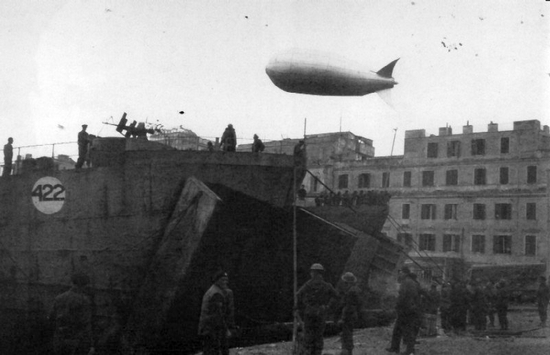
LST-422 unloading at Anzio harbor prior to that fateful January day.
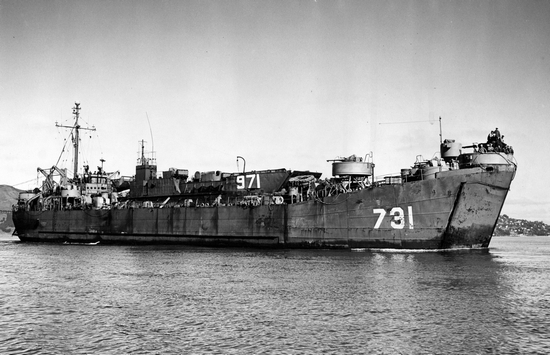
Full view of an LST (landing ship tank). The type Art Sinclair was aboard on January 26, 1944
Some of the information contained in this biography was found at www.dvrbs.com. Thanks also to Terry Lowry, official historian of the 83rd Chemical Mortar Battalion for sharing information from his book entitled Bastard Battalion: A History of the 83rd Chemical Mortar Battalion in World War II.
Thanks to Astrid van Erp for help with photos for this biography
Date Added March 4, 2012 Updated July 29, 2017
Baseball's Greatest Sacrifice is associated with Baseball Almanac
Baseball's Greatest Sacrifice is proud to be sponsored by

